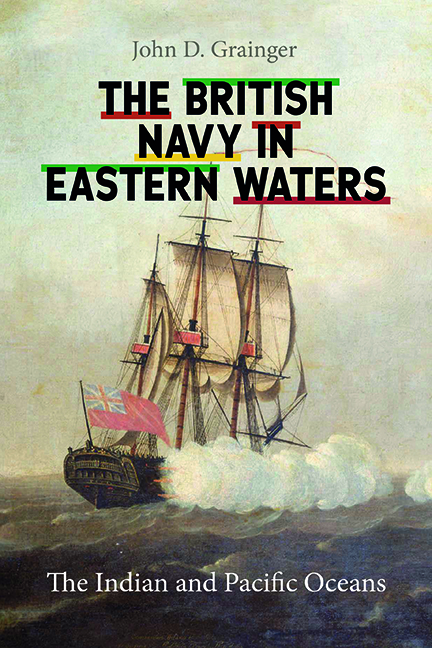10 - The Company Reduced, its Empire Expanded (1811–1838)
Published online by Cambridge University Press: 26 May 2022
Summary
It took a little time for the Admiralty to react to the elimination of the French threat in the Indian Seas, but then the wider war was still on in Europe until 1814, with a final burst in mid-1815. With peace seemingly assured after the defeat and occupation of France, and with the conclusion of the peace settlement, the Treaty of Vienna, and no naval threat visible after the defeat of the United States’ ships at sea between 1812 and 1814, the naval establishment in the Indian Ocean could be relaxed.
The war with the United States had scarcely had any effect in eastern waters. The occasional American ship might penetrate past the Cape or into Indonesian waters, but only one incursion into these seas was seriously attempted, by three ships, President (44), Peacock (22), and Hornet (18), all frigates or smaller, out of New York. President was damaged coming out of New York harbour in a gale, and was quickly caught and captured. Peacock and Hornet left New York a week later, on 22 January 1815, also in a storm to avoid the blockading squadron. They separated, and Hornet met and defeated Penguin (18); Commodore Biddle in Hornet was told that the war was over, but continued firing. They sailed to pass the Cape, but encountered Cornwallis (74), which chased Hornet, while Peacock, a faster sailor, got away. Hornet only survived by throwing overboard its guns and stores, after which it could only go home. Peacock got as far as the Sunda Strait, where it encountered the Bombay Marine brigsloop Nautilus (14), which was defeated, even though Nautilus made it clear to Captain Warrington of Peacock that peace had been made six months before – which Warrington presumably also knew since he had met Hornet which had the news. But Peacock went on firing until Nautilus surrendered. (The ship was returned and compensation paid.) All in all, it was an inglorious end to the inglorious war for the United States’ Navy. For the British it was fortunate that they had secured Mauritius; in French hands, the island would have provided a useful base for the American raiders.
- Type
- Chapter
- Information
- The British Navy in Eastern WatersThe Indian and Pacific Oceans, pp. 187 - 204Publisher: Boydell & BrewerPrint publication year: 2022

